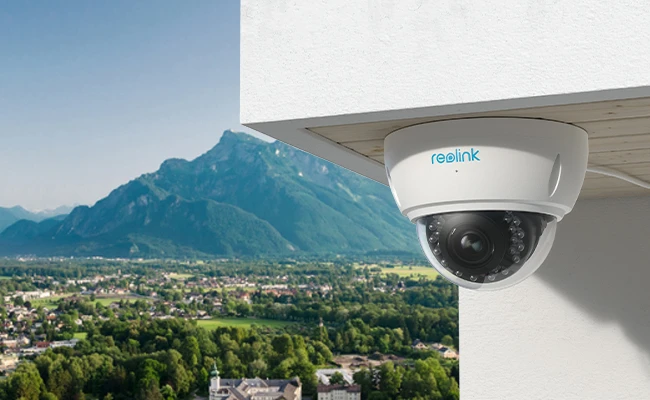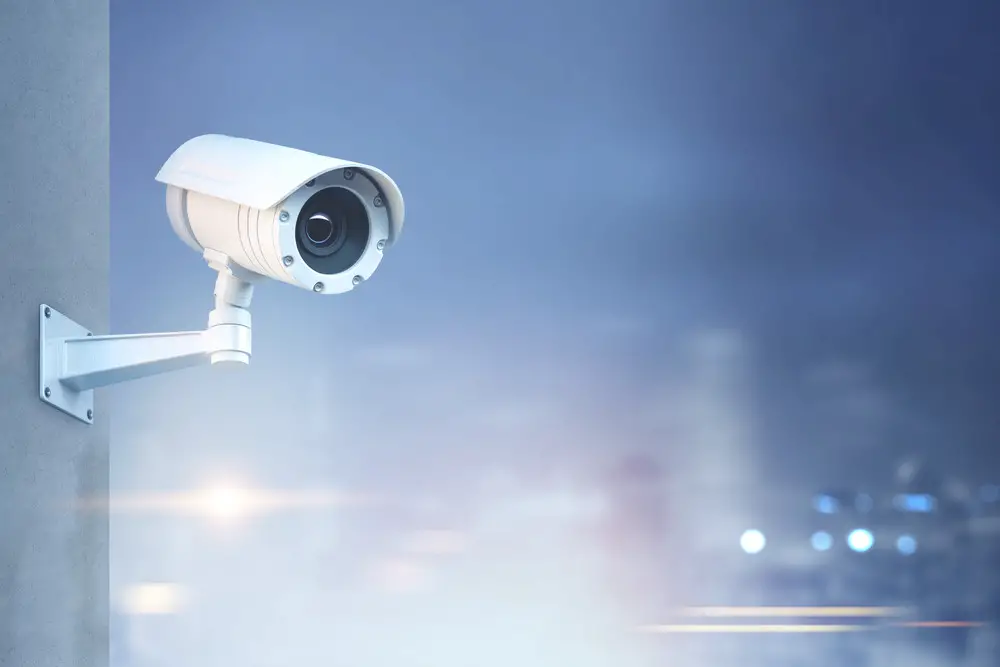How Do Wireless CCTV Cameras Work? Transmission Range and Interference
How do wireless CCTV cameras work? With advancements in technology, wireless CCTV cameras have gained popularity due to their convenience and flexibility. In this article, we will explore how wireless CCTV cameras work, their components, and the benefits they offer.

How Do Wireless CCTV Cameras Work?
Wireless CCTV cameras have revolutionized the surveillance industry by eliminating the need for complex wiring and providing greater flexibility in camera placement.
These cameras utilize wireless technology to transmit video signals from the camera to a receiver, offering a wide range of benefits for both residential and commercial applications.
Closed-Circuit Television (CCTV) cameras are video surveillance cameras that capture and record footage for monitoring and security purposes.
They are commonly used in various settings such as homes, offices, retail stores, banks, and public areas.
The primary goal of CCTV cameras is to deter crime, monitor activities, and provide valuable evidence when incidents occur.
Wireless CCTV Cameras: An Overview
Wireless CCTV cameras, as the name suggests, operate without the need for physical cables. Instead, they utilize wireless technology to transmit video signals to a receiver.
This wireless transmission provides greater flexibility in camera placement, making it easier to monitor areas that may be challenging to reach with wired cameras.
Components of Wireless CCTV Cameras
Wireless CCTV cameras consist of several key components that work together to capture, transmit, and display video footage.
1. Camera Unit
The camera unit is the core component of a wireless CCTV system. It captures video footage and converts it into a digital or analog signal, depending on the camera’s specifications.
2. Transmitter
The transmitter is responsible for wirelessly transmitting the video signals from the camera unit to the receiver. It utilizes radio frequencies or Wi-Fi to transmit the signals securely.
3. Receiver
The receiver acts as the central hub that collects the transmitted video signals from the camera. It can be connected to a display unit such as a monitor or a digital video recorder (DVR) for live monitoring or recording purposes.
4. Display Unit
The display unit is where the video footage from the wireless CCTV camera is viewed. It can be a monitor, a computer screen, or a mobile device connected to the receiver, providing real-time monitoring capabilities.
Transmission of Video Signals
Wireless CCTV cameras transmit video signals in either digital or analog format.
1. Digital Signals
Many modern wireless CCTV cameras use digital signals for transmission. Digital signals offer better image quality and are less susceptible to signal interference. They can also be encrypted for enhanced security.
2. Analog Signals
Analog signals were more commonly used in traditional CCTV systems. However, some wireless CCTV cameras still use analog signals for transmission.
Analog signals are more susceptible to signal degradation and interference, resulting in lower image quality compared to digital signals.
Transmission Range and Interference
Wireless CCTV cameras have a transmission range that varies depending on the model and environmental factors.
Signal interference can occur due to physical obstructions, such as walls or other wireless devices operating on similar frequencies.
It’s important to consider these factors during camera placement to ensure optimal signal strength and quality.
1. Power Source for Wireless CCTV Cameras
Wireless CCTV cameras require a power source to operate. Most wireless cameras are powered by either batteries or an external power supply.
Battery-powered cameras offer flexibility in terms of placement but require regular battery replacements or recharging.
Cameras powered by an external power supply, such as an electrical outlet or Power over Ethernet (PoE), eliminate the need for battery maintenance but may have limitations in terms of camera placement.
2. Installation and Setup Process
Installing and setting up a wireless CCTV camera involves several steps to ensure proper functioning and optimal performance.
3. Camera Placement
Careful consideration should be given to the placement of wireless CCTV cameras. Factors such as the area to be monitored, line of sight, and potential signal interference should be taken into account.
It’s important to choose suitable locations that provide a clear view of the desired surveillance area.
4. Pairing Transmitter and Receiver
To establish a wireless connection, the transmitter and receiver need to be paired. This process typically involves following the manufacturer’s instructions to synchronize the camera unit with the receiver.
5. Connection to Display Unit
Once the transmitter and receiver are paired, the receiver can be connected to a display unit for monitoring. This can be done through wired connections or wirelessly, depending on the system’s capabilities.
Advantages of Wireless CCTV Cameras

Wireless CCTV cameras offer several advantages over their wired counterparts, making them a popular choice for many security applications.
1. Flexibility and Ease of Installation
Wireless CCTV cameras provide greater flexibility in terms of camera placement.
Without the need for physical cables, they can be installed in various locations, including areas where running wires would be challenging or impractical.
2. Reduced Wiring and Maintenance
The absence of wires simplifies the installation process and reduces the need for extensive wiring. This not only saves time but also minimizes the visual impact of the camera system.
Additionally, wireless cameras require less maintenance compared to wired cameras, which may require periodic cable checks and replacements.
3. Remote Access and Monitoring
Wireless CCTV cameras often come equipped with remote access capabilities. This allows users to monitor the camera’s feed from anywhere using a smartphone, tablet, or computer.
Remote monitoring provides added convenience and peace of mind, especially for homeowners or business owners who travel frequently.
4. Enhanced Security Features
Many wireless CCTV cameras offer advanced security features, such as motion detection, night vision, and two-way audio.
These features enhance the effectiveness of the camera system and provide additional layers of security.
Limitations and Considerations
While wireless CCTV cameras offer numerous benefits, there are also some limitations and considerations to keep in mind.
1. Signal Interference and Range Limitations
Wireless signals can be affected by various factors, including physical obstructions and other wireless devices operating on the same frequencies.
It’s important to select wireless CCTV cameras with a sufficient transmission range and consider potential sources of interference during installation.
2. Security and Privacy Concerns
Wireless camera systems, like any technology connected to the internet, can be vulnerable to hacking or unauthorized access.
It’s crucial to implement proper security measures, such as using strong passwords and enabling encryption, to protect the system from potential breaches.
3. Power Requirements
Wireless CCTV cameras require a reliable power source to operate continuously.
Battery-powered cameras need regular maintenance to ensure uninterrupted operation, while cameras powered by external sources may have limitations in terms of camera placement.
Conclusion
Wireless CCTV cameras have transformed the way we approach surveillance and security.
With their wireless transmission capabilities, flexibility in placement, and advanced features, these cameras offer a convenient and effective solution for monitoring various spaces.
However, it’s important to consider factors such as signal interference, power requirements, and security concerns when choosing and installing a wireless CCTV system.
READ ALSO!!!






